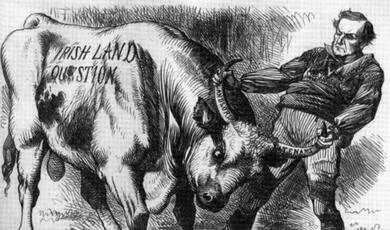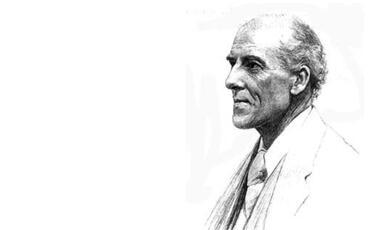Using Mortality to Compare the Health of Populations
Share
- Details
- Transcript
- Audio
- Downloads
- Extra Reading
Download Transcript
29 November 2012
Using Mortality to Compare the Health of Populations
Professor James Vaupel
I want to follow up on one of Graunt’s interests, which was to use mortality to understand health conditions, to try to get a deeper understanding of health conditions, and how can we use mortality to shed light on health, and how can we use mortality to compare the health of different populations. This is something I have gotten into recently.
Let me start with a slide I have used before: this is, on the vertical axis, we have risk of death for Swedish females, and, on the horizontal axis, age, from 30 to 90, and here is the trajectory of Swedish death rates, Swedish female death rates, in 1950. It is on a log scale and so the line is approximately straight because mortality goes up exponentially. So, this is what Swedish females experienced in 1950.
Here is what happened in 1980, and here is what happened in the year 2010, and what you can see is the lines are shifting over. They are more or less parallel – there is a little bit of convergence, but they are more or less parallel and they are shifting over. So, we are not extending longevity, we are not increasing life expectancy by slowing down the rate of aging – the slopes are roughly the same of these lines. We are increasing lifespan by postponing, in essence, by postponing mortality to higher and higher ages.
We can see this if you take a look, for example, at the age in which the chance of death is 1%, and let me suggest this might be called the age in which a person enters the realm of older individuals, when you have to start worrying about death when it gets above 1%. In 1950, for Swedish females, it was age 57, and in 1980, it was age 63, so a six year delay in the age when you become older, and in 2010, it is 68, so a further five year delay. So, altogether, an eleven-year delay in the age at which you become an older person, and this is an eleven-year delay in a 60-year period, so really quite a remarkable postponement of senescence.
Let me now show this similar information but for several different countries. Here, we have current age, 50, 60, 70, 80, 90, and the age of equivalent mortality 50 years ago, in different countries. If you look at the French, and let us say age 70 – I have it in bold. French females who are 70 years old today have the same chance of death as French females who were 59 years old had 50 years ago, and the same thing is true for the men, so there has been an eleven-year shift, an eleven-year delay – age 59, 50 years ago, is the same as 70 today. So, 70 is the new 59, okay?! This has major implications for retirement policy. The French have been reluctant to raise the age of retirement, but you can see that they should.
The same thing is true for France at other ages: 50 is compared to 42; 90 is the new 83; and so on. And the same thing is true for other countries, and for men as well as for women. On average, if you take the shift in equivalent age across all these countries and ages, it is about a decade, about ten years on average. So, in 50 years, senescence, or aging, has been postponed by about ten years.
If we look at France and we look at the age in which there is a 1% chance of death, both for men and for women, and we look at this from 1950 to 2010, you can see that the age at which there is a 1% chance of death has gone from 57.3 up to 71 over this time period. Before, I showed you 1960 versus 2010. This is 1950 versus 2010.
We could also look at the age in which the chance of death is 10% - this is when you really have to start worrying about mortality. That has shifted up from 80.1 to 88.4 for the French females.
Then, I calculated the gap between the age in which you have a 1% chance of death and the age when you have a 10% chance of death and I called that old age, and you can see that the duration of old age has gone down from about 22.8 years to 17.4 years – there has been some compression of the period of old age.
Then, I calculated remaining life expectancy for people who reach the age at which the chance of death was 10%, so people who entered the realm of advanced old age, and in 1950, people who reached 80.1 had six more years of life, on average, and in 2010, people who reached advanced old age, at 88.4, had just shy of six more years of life. So, the span of advanced old age has been about six years, but that has shifted up to higher and higher ages, so there has been this delay in old age, some compression in the length of old age, a delay in advanced old age, and advanced old age has been compressed a little bit but not much.
The same thing is true for men, but the men, you may notice, experience a longer period of old age, and that is because they reach the age at which death rate is 1% much earlier than women do, in large part because of reckless behaviour, but the period of advanced old age is similar for men and for women. And, again, for the men, it has shifted up.
Here I have these durations of advanced old age for different countries. So, for the UK, for females – this first column is life expectancy when your chance of death is 10%, so X10 is the age when your chance of death is 10%, and E is life expectancy, so remaining life expectancy when your chance of death is 10%. In the UK, in 1960, it was about six years, and for the UK, the most recent data we have, it was about six years, 5.9 years, for the women, and for the men, it was also about six years, 6.3 and 6.1. I picked Russia and Belarus as countries that are not particularly well. Mortality is actually going up instead of going down. But for all of these countries, the duration of advanced old age is roughly six years – a little bit longer in some countries, but roughly six years.
So, there appears to be a more or less constant – more research has to be done on this, but there appears to be a more or less constant period of old age, advanced old age, if you define this as life expectancy when you reach the age when chance of death is 10%.
The basic point of my talk is that we can use ages of equivalent mortality as a measure of ages of equivalent health, that is my basic argument, but I want to emphasise, at the very beginning, that this is rough. I think it is serviceable, but very rough.
Here I have some Danish data on how long you live with long-term disability and without long-term disability. The orange is long-term disability, and the definition of long-term disability is you cannot take care of yourself – you need somebody to help you take care of yourself. This is for women, and you can see that, in 1987, women had, altogether, about eleven years of life left when they turned 75, but most of those years of life were years of disability, that, over time, life expectancy has gone up a little bit, and the years of disability have gone down a little bit, the years of non-disability, disability-free life, have gone up a little bit, so there has been a real improvement. So, health has changed in a complicated way, more complicated than suggested by the simple change in mortality. I want to emphasise that I think mortality is a rough measure of health, but underlying this is more complicated changes.
Let me show you males to emphasise that it is really more complicated than simple measures of mortality. The men live shorter than the women, but the men spend fewer years in a disabled state – they have fewer years of long-term disability, and they have more years – look at 2005, the men have 6.2 years of life without long-term disability, whereas the women only have 5.9 years of life. So, women live longer at 65, but the extra years of life are years of disability. So, there is a sex difference, a gender difference between men and women, and you cannot take the age at which male mortality reaches 1% and the age where female mortality reaches 1% and say that men and women are equally healthy at those two ages. There are major differences between the two sexes. I want you to bear that in mind as a caveat, but, again, as a rough measure, I think ages of equivalent mortality are a good measure of ages of equivalent health.
Sergei Scherbov and Warren Sanderson and others, in Vienna, have been working on this, they have done a lot of pioneering work on this, and they have suggested that we use remaining life expectancy, ages of equivalent remaining life expectancy, as a measure of equivalent age, rather than ages of equivalent mortality.
What I have tried to do here, I look at France and Sweden over time, men and women, and I plot ages of equivalent mortality, in the top panel, ages of equivalent remaining life expectancy, on the period basis, and ages of equivalent life expectancy on a cohort basis, and you can see you get different pictures of what equivalent ages are, depending what measure you use, and using ages of equivalent mortality attracts current conditions much better. If you look at cohort life expectancy, these trends are much smoother and I also want to emphasise there are different ways to think about equivalent ages. Do you want to think of equivalent age as when you have a 1% chance of death, two time periods, 1% chance of death aged 60 in one time period, and 1% chance of death at age 70 in the later time period? Are those equivalent ages, or do you want to think about how many years of life do you have left? If you measure how many years of life you have left, do you want to do it on the period basis or a cohort basis?
Just to give you another example, this is for Japan, men and women in Japan. The red line gives you ages of equivalent mortality when the chance of death is one in a thousand. You can see that, in 1950, a twenty year-old Japanese woman had a chance of death of one in a thousand, and now it is age 40, so there has been a real rapid chance in the age in which the chance of death is one in a thousand. If you look at the period, the age in which remaining period life expectancy is 40, there has been a much more gradual shift, and if you look at the age in which cohort life expectancy is 40, it is higher and an even more smooth transition.
I do not want to dwell on this so I am going to skip over the next two slides, but I just want to say that there is some interesting work being done in Vienna. They are using life expectancy as their measure of equivalent age, and I am going to use mortality as a measure of equivalent age.
Here, we have, looking at mortality as a measure of equivalent age, and looking at two mortality statistics, namely X1, the age at which your chance of death is 1%, and X10, the age at which your chance of death is 10%. This is for the UK, females and males, 1960, X1 and X10. So, for females in the UK in 1960, your chance of death was 1% at age 59; for men, it was 1% at age 51. But if you look at the older people, X10, the age when your chance of death was 10%, in 1960, it was 81 was females, and 78 for males, so less of a gap.
What happened between 1960 and now? Okay, so, for the females, X1 went from 59 to 67, an eight year delay of senescence, and X10 went from 81 to 88, a seven year delay in senescence. For the men, there was similarly an eight year delay in X1, and a seven year delay in X10, so similar pattern for both the men and the women, and this postponement of senescence by seven or eight years.
France, in 1960, was the same as the UK, in 1960, according to these two measures. So, French women at 59 had the same health as UK women who were 59, as measured by that their chance of death was 1%. How did the French do? Well, they did better. They did better for the women and they did about the same, a little bit better, for the men. But I think it is quite a remarkable postponement of senescence.
The US was also in the same ballpark in 1960, and the US did worse – about the same in some cases but worse in other cases.
Japan, it is amazing how close these countries were in 1960, Japan did a little bit worse, but of course, in terms of improvements, Japan did considerably better – same ballpark, but better.
Look at Russia. UK, 59; Russia, 58. UK 81; Russia 82. UK, 51; Russia 80. UK, 78; Russia, 78. So, Russia was very similar to the UK in 1960 in terms of these measures.
Of course, Russia did not do so well. For the females, the X1 stayed the same, at 58, and even at age X10, it stayed the same, at 82; and for the men, X1 fell from 50 to 43, so 43 year old Russian men now have a 1% chance of death, and it stayed the same, at 78, at X10.
Finally, here is Belarus. So, in 1960, you can see Belarus was actually doing remarkably well. Sometimes people forget that the Eastern European countries were doing very well in 1960 compared to the Western European countries. But Belarus has also fallen behind, about as much, even worse than Russia.
We can use mortality as getting some hint as to the health conditions of different countries.
So, how do you measure somebody’s health? In these surveys, they ask people questions, so, you know, “How would you rate your health?” and have you had this disease or that disease, and can you do this, can you do that. It is very subjective, and people in different countries answer these questions differently. Italians are more optimistic, and the Swedes are more pessimistic. So, survey researchers have tried to find some measure of health that is objective, and the single most objective measure that has been found is grip strength. So, you give somebody a meter and they pull this meter and how much grip strength do you have, and it turns out this is a good predictor of subsequent life expectancy and mortality.
On the top, we have the grip strength – M is the value of the measure. The grip strength at X10, the grip strength at X1, and then we have this for different countries, for the United States, for all of Europe, and then for different countries in Europe. You can see, if you look across the top, that grip strength at age X1 for the blue, that is the males, generally occurs around age 50 – you have a grip strength of 46, 47, around age 50, and then by the time you get to be older, at age X10, which is around age 85 or so, your grip strength is considerably lower. It is the same pattern for the females: you have a higher grip strength at X1 and a lower grip strength at X2. But what I wanted to show you was that the different countries vary a little bit, but they do not vary a whole lot – they are mainly around the same line. If you look at the ratio of grip strength at X1 to grip strength at X10, how much grip strength you lose from the time your mortality hits 1% to the time your mortality hits 10%, how much higher it is when your mortality is 1% than when it’s 10%, you can see men and women, on the top part of the graph, men have much greater grip strength than women, even though they have higher mortality, so we have to correct for this, but if you look on the bottom part of the graph, if you look at relative grip strength, you can see that the men and women, in most of the countries, are pretty close, and that all of the countries are pretty close, that the ratio of grip strength at age X1 to the value at X10 is something between 1.4 and 1.5 between most of these countries. So, grip strength seems to be consistent with mortality, the level of mortality.
You can see that also, here, at the bottom of the diagram, we have Q, which is the probability of death, and on the vertical axis, we have standardised grip strength, and we standardised it so that the standardised grip strength measure is zero at age X1, and it is one at age X10, and then we plot the different curves. After you standardise men and women – this is just for women, but after you do the standardisation, the pattern of change over age are pretty linear.
Here, we have men and women, European males and US males, and we have four different measures of health. One measure of health is physical health, which is measured by this grip strength; and then there is cognitive health, measured by various questions about if you can remember things and what day is it and where are you and things like that. Then, activity limitations – can you take care of yourself or do you need help in doing basic activities of daily life? And then perceived disability – do you consider yourself healthy or do you consider yourself unhealthy? You can see that, both for the men and for the women, both in Europe and for the United States, all of these curves, if you take your bifocals off, the increase in mortality roughly captures the decline in various measures of health.
What I want to turn to now is something completely different, and I will want to step back and explain this to you carefully. So, up until now, I have been arguing that one way to try to compare the health of two different populations is to look at mortality at some particular level, like 1%, so, look at the age at which mortality is 1% in one population, and the age at which mortality is 1% in another population, and then use those ages as equivalent ages. As I pointed out before, according to this, 70 is the new 59 for France.
Supposing, instead of looking at data just for recent populations, we wanted to look at the long-term evolution of mortality for humans. Well, then we might want to go back to what mortality was like several thousand years ago. We are doing research on skeletal data to try to reconstruct mortality several thousand years ago, but it is difficult. It is difficult to get an unbiased sample of skeletal remains and there are problems with migration, in and out migration, and there are problems with age estimation. So, another way of doing this is to study the mortality of hunter gatherers, so people who are alive today who live lives that are somewhat similar to the life that humans lived a long time ago.
Mike Guren and Hilly Kaplan devoted a massive amount of effort to trying to compile data on all the hunter gatherer studies that had been done, all the hunter gatherer groups that had been studied, and they produced a hunter gatherer mortality trajectory, and they smoothed it, using something called a seiler curve, and this is the hunter gatherer mortality trajectory.
The horizontal line is the line of lowest mortality. What I want to point out here is that this line of lowest mortality is about 1%, so, even at age 12, hunter gatherers had something like a 1% chance of death. The other thing I want to point out is it is pretty flat. It does not change very much between ten, eight or ten, and 30, and for some of the hunter gatherer tribes actually, mortality, the lowest point of the mortality curve is after 30, about 32. For other groups, it is ten, eleven, but, on average, it is very flat during this period from roughly eight to 30, and then it starts going up.
So, we decided to use this hunter gatherer mortality trajectory as a comparative base line and to try to look at modern human experience compared to the hunter gatherers to get a long-term evolutionary perspective on aging.
Here are the hunter gatherers compared to Swedes. The earliest curve for Sweden is 1750, and then we have a curve every ten years. They are not labelled, but you can guess that the higher curves are the earlier years, and the most recent curves are the lowest ones. It is on a log scale, so you can see that there has really been massive improvements in mortality since 1750. There is a pile-up here between 1750 and 1900. There was an improvement, but there was not a whole lot of improvement, if you view it this way. After 1900, the last ten curves, you can see that there has really been a major change, so there has been a massive change in human death rates, especially at the younger ages, since 1900.
How much should we expect that change to be? How much would you have expected that change to be? The reason this is important is that, from an evolutionary point of view, what is important is not how long somebody lives or how many babies the person has, it is the expected number of babies the person has, so something called fitness, which is your expected fertility, and that depends on age-specific fertility and also depends on age-specific mortality. So, evolution does not maximise longevity; evolution maximises expected fertility – that is what evolution optimises. If you are Mother Nature and you want to optimise expected fertility, you should try to bring death rates down as much as you can at the start of the reproductive period because, if you lose someone at the start of the reproductive period, then you have lost all remaining reproduction of that person, whereas if somebody dies at age 45 or 50, you lose very little reproduction, and if somebody dies at age zero, or let us say at age one, then you have only invested one year of societal resources in the person instead of having invested fifteen years of societal resources in the person. There is a strong evolutionary pressure to reduce mortality as much as possible at the age at which fertility starts. You can see that with this massive reduction in mortality since 1900, the biggest change has been at the age when fertility starts. Mother Nature tried to do her best, tried to minimise mortality at this age, and you can see that from the black curve – that is the point where the mortality is minimum – but through non-genetic change, through environmental and behavioural change, we have managed to reduce mortality at that age by a factor of more than 100, which is really amazing. You would not have expected this based on evolutionary theory.
On the panel on the left, we have various populations, so Japan in 2010 is this red line on the bottom, and Japan in 1947 is the dashed red line; and then Sweden in 2010 is the blue line on the bottom, and there is a dotted and dashed line for Sweden in 1900 and 1800. Then our hunter gatherers are the black line, and then there are acculturated hunter gatherers, so these are hunter gatherers who have some contact with the outside world, and that is the dashed black line. Maybe somebody will produce an even more horrific life table, but the worst one I could find was for slaves on Trinidad in the late 1700s, and the slaves on Trinidad, they are shown by these black diamonds, and you can see very high mortality. Then, finally, and this is politically very incorrect, but we are going to compare humans with chimpanzees, so we have wild chimps and captive chimps, and those are the green lines.
So, I am going to come back to this later, but you can just look at this and see that, up until 1900 or so, the human experience was fairly similar to the chimp experience, and our experience today is further away. Humans today are more different from our ancestors 100 years ago than our ancestors 100 years ago were from chimps, in terms of our mortality experience. Is that not interesting? It is hard to know what to make of this, but from an evolutionary point of view, this is very important. The reason I am excited about it is because it highlights the enormous sea-change that has taken place in the last 100 years in mortality, that we have distanced ourselves more from our ancestors than our ancestors distanced themselves from chimpanzees, our nearest relatives.
If you look at the diagram, we have equivalent ages. Let me go through this slowly because it is a very interesting diagram. The x axis is hunter gatherer age, and then the vertical axis is the equivalent age of different populations. Using the same idea that we had before, two ages are equivalent if there is the same level of mortality. If you go up to the top of the diagram and look at the 72 and 30, which is where the title comes, “72 is the new 30”, so modern Japanese today, at age 72, suffer the same death rate that hunter gatherers suffer at age 30. If you go down into the bottom part of the diagram, you can see what the equivalent ages are for hunter-gatherers and chimpanzees. There is a gap – I mean, I do not want to say that chimpanzees and hunter gathers are the same. So, hunter gatherers who are 71 have the same death rate as chimpanzees have when they are 30, so there is a gap between hunter gatherers and chimpanzees, but the gap is smaller than the gap between our ancestors and us today.
Here is a picture of the ratio of mortality improvements, so, again, let us go through this carefully. The blue line on the top is the ratio of hunter-gatherer mortality to Swedish mortality in 2010, and it is by age. You can see that, from just after birth until almost age twenty, the hunter-gatherers have 200 times higher mortality than Swedes do today. The red is hunter-gatherers to Japan, and the same thing, 100, 200 times higher mortality. So that is what I was showing you before, this enormous reduction in mortality at younger ages.
Then, if you follow the curves down, you can see that there is less reduction at higher and higher ages, but even at age 80, there is something like a five-fold, roughly, difference between the hunter gatherers and modern humans.
You can compare hunter gatherers, the next blue line is labelled 1950, so that is hunter gatherers compared to Swedes in 1950, and then the bottom blue line is hunter gatherers compared to Swedes in 1900. There, again, I want to emphasise that the hunter gathers had about twice the mortality of Swedes, twice the death rate of Swedes, in 1900. It is fairly constant across the age range. Then, in 1950, we start to get these big improvements, but after 1950, we get these enormous improvements – this is on a log scale, you see. There is twenty and then there is 200, so there has been enormous improvement since 1900, and particularly since 1950. I mean, within my lifetime, there has been enormous improvement.
If you look at the wild chimpanzees to the hunter gatherers, you can see that the chimpanzees have three, four, five times the chance of death at any age as the hunter gatherers. So, at older ages, the difference between the chimpanzees and hunter gatherers is about the same as us and our ancestors, but at younger ages, our chance of death at younger ages is vastly different from the hunter gatherers.
Another way to see this is that we have time running across on the x axis, on the horizontal axis, from 1750 to the present, and then the mortality improvement, so as measured by minimum mortality over the course of the lifetime. What we did is we looked at the life course and found the age at which mortality was minimum, which is usually something like ten or fifteen. For the hunter gatherers, that level is a little bit more than 1%, and then the dashed lines represent the standard error, how much variance there is among hunter gatherer, different hunter gatherer tribes.
For Sweden and France, up until 1900, the lowest level of mortality was lower than the hunter gatherer level, but not a whole lot lower, and then, again, starting around 1900, you see this dramatic decline, so that, recently, the chance of death at the age at which mortality is lowest is one in 10,000 for humans today, where it was 1% for hunter gatherers, and close to 1% historically for humans.
If you look at the chimpanzees, their lowest level of mortality, it is about 5%, 4% I think, and then in the hunter gatherers – so, there is about 6.6 million years that separate us from our common ancestor, so over a period of 6.6 million years, there was that change in the minimum level of mortality, and then, if you look at Sweden, France and Japan, this enormous change mainly took place over the last 150 years, and in fact, mainly particularly over the last 100 years. So, we have done more in that short period of time than evolution did in 6.6 million years.
Let me just briefly summarise the main results and point out some of the interesting research questions that have to be answered. The question is: can we use the notion of equivalent age to shed light on health conditions? And how should we think about equivalent age? So, the method that I emphasised was to think about ages in which the chance of death is the same, so the age when the chance of death is 1%, and I defined that as the start of old age, and the age at which the chance of death is 10%, I defined that as the start of advanced old age.
In terms of the hunter gatherers, the age at which the chance of death was 1% was the lowest chance of death at any age, so it was twelve, right? And then, more recently, as I showed you for French men and women, 50 years ago, the chance of death was 1% at age 59, and now, the chance of death is 1% at age 70, so it goes from twelve, to 59, to 70, from hunter gatherers to people 50 years ago, to people today.
If you take ages of equivalent mortality and you look at health statistics at those ages, and we were able to look at four measures of health – the measure of physical health, measure of cognitive health, measure of activity limitation, and the measure of self-perceived health – it turns out that these levels vary between men and women. Men, for example, have greater grip strength than women do, mainly because we are bigger. They vary from country to country, in part because people are bigger in some countries than they are in other countries. But, if you standardise so that you standardise by the level at the age at which the chance of death is 1%, and then you look at the pattern thereafter at higher ages, the trajectory of these measures of health pretty much follows the trajectory of mortality. So, at least in terms of those measures, mortality does appear to be a pretty good measure of health.
We need more data on this. We only have limited data – we need more data that goes back longer periods of time, and we need some measure of health that we could study for 50 or 100 years so we could compare with mortality over 50 or 100 years, and we have not been able to find anything so far. So, if anybody knows of something that we could use, then I would be very happy to talk with you about that.
We might be able to use stature as a measure, indirect measure of health and see how that works, and we might be able to use something like IQ. There has been this steady increase in IQ as mortality has gone down, and as life expectancy has gone up, IQ has gone up, and IQ might be some rough measure of health. But we need some measures of health that we could use over long periods of time.
Just to see how far we could go, we decided to just be very brave and try to look at very, very long periods of time, from hunter gatherers to today, and compare us with chimpanzees, and even though we do not know for sure that a 30 year hunter gatherer has the same health as a 72 year old person today, there is some indication that the mortality is about the same and maybe the health is about the same. So, it does seem to shed some sort of light on long-term trends in health.
We are celebrating Graunt today, but another famous researcher or contributor to mortality is Benjamin Gompertz. He argued that your health could be measured by your ability to withstand destruction – that was the phrase, “ability to withstand destruction” – and then he measured the ability to withstand destruction by mortality. So, Gompertz argued that death rates were a good measure of health, so this is a long tradition that goes back to 1823.
© Professor James Vaupel, 2012
This event was on Thu, 29 Nov 2012
Support Gresham
Gresham College has offered an outstanding education to the public free of charge for over 400 years. Today, Gresham plays an important role in fostering a love of learning and a greater understanding of ourselves and the world around us. Your donation will help to widen our reach and to broaden our audience, allowing more people to benefit from a high-quality education from some of the brightest minds.


 Login
Login







